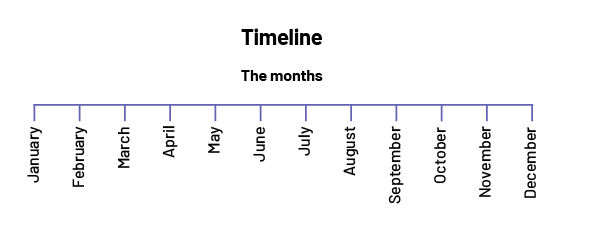E2.3 Read the date on a calendar, and use a calendar to identify days, weeks, months, holidays, and seasons.
Skill: Reading the Date on a Calendar and Identifying Days, Weeks, Months, Seasons, and Events
Time is an abstract concept that cannot be seen or felt. The passing of time can be measured by counting things that repeat. For example:
- the passing of a day is marked by the rising and setting of the Sun;
- calendars keep track of days, weeks, months and years, as well as holidays and seasons;
- calendars enable people to communicate a date to others.
Source: The Ontario Curriculum. Mathematics, Grades 1-8 Ontario Ministry of Education, 2020.
Relationships between different time frames can be explored in parallel with the concept of duration. Relationships are more easily established when exploration activities deal with the same time frames. The daily activities of young students during a school day are good models.
Examples
- After learning to recite the days of the week, students are able to make the connections between yesterday, today, and tomorrow.
- With teacher support, students realize that there are seven days in a week, five of which are school days.
- Gradually, students realize that a month usually has 30 or 31 days (February has its own peculiarities) and about four weeks.
- It is also from activities related to the calendar that students realize that there are 12 months in a year. Students begin by reciting the months as a nursery rhyme and then associate them with monthly or annual events such as Canada Day, "Heart Month," or spring in March.
- Through activities, observations, and discussions, students come to associate the months and seasons. A timeline of the months and the year helps students to grasp this concept.

Note: Although teachers present and discuss events on the calendar each day, the student must manipulate the calendar to fully understand and use it. It is not enough to read or locate events on the calendar, students must construct or complete calendars to truly grasp the concept of the number of days in each week and month.
For example, students could give their parents or caregivers a calendar with all the names of the months, dates, illustrations for each month, and the birthdays of family and friends.
Another idea would be to place an unmade 12-page/month calendar in an activity centre (ideally with pictures representing the different months) and have students place the pages in chronological order.
Source: translated from Guide d’enseignement efficace des mathématiques, de la maternelle à la 3e année, Mesure, p. 66-67.
